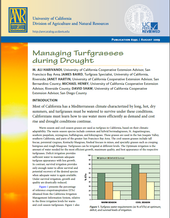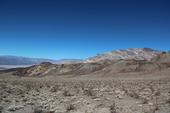- Author: Clyde Elmore
- Posted by: Gale Perez

Do weed populations change during a drought? Does drought favor certain species? Does annual or perennial species matter? During this four year period of drought in California, have they changed? What are the populations of annual and perennial weeds? With a limiting growth factor, in this case water, weeds become more prominent and which of them will or could disappear?
In urban landscapes, where turf grass areas are being renovated, or in non-irrigated land that has been farmed, but furloughed, or in non-cropped roadsides or wasteland, are we seeing life-cycle species shifts? Or is it that we see a loss or decreased competitiveness of annual species, thus perennial species can be observed?
I will give the example of...
- Author: Jeannette E. Warnert
- Posted by: Gale Perez

Here's something from Jeannette Warnert [(559) 240-9850, jewarnert@ucanr.edu] via UC ANR News :: July 15, 2015
The drought needs not be a death sentence for your lawn
While a golden brown lawn is seen as a badge of honor to some residents of drought-stricken California, in fact, they are doing more harm to the environment than good, says UC Agriculture and Natural Resources
- Author: Brad Hanson
Pop quiz.
Today's post is a) long, b) recycled from another use, c) of high interest due to current weather conditions, or d) all of the above? The correct answer, I think, is "D" all of the above.
As an aside, the length of this post reminds me of one of my favorite Mark Twain quotes " I didn't have time to write a short letter, so I wrote a long one instead" - there's a lot of truth in that.
Ok, this is actually an article I prepared for the meeting booklet for the Plant...
- Author: Lynn M. Sosnoskie

Despite the increasing potential for rain this week, California remains poised to experience exceptional drought conditions in 2014. Under prolonged periods of dry weather, weed control is likely to suffer. This is especially troubling for growers as both crops and weeds will be competing to capture limited soil moisture, which could result in significant yield losses.
Although fewer weed seeds may germinate under dry conditions, weeds that do emerge and become established may be more difficult to manage with herbicides. Drought-stressed weeds are likely to have thicker cuticles (which is the waxy coating on the surface of the leaf), which can inhibit the absorption of post-emergence products. Additionally, plant architecture...


